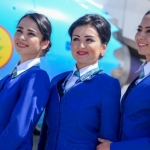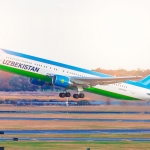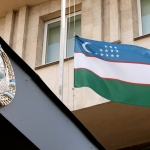31 AUGUST 2019 Y.
Music is a mirror of the country, where the entire palette of its historical past, extended for thousands of years, the true color and unique originality of the mentality of its inhabitants are displayed in a kaleidoscope.
Music, which has entered the lives of people since immemorial time, from all forms of self-expression most accurately allows you to convey the voice of the soul. It is understood by any person, no matter what language they speak or what continent they live in, allowing you to remove all borders and barriers.
The diversity of peoples living on the Uzbekistan territory, over time, has formed a unique, in its essence consonance, although it has a recognizable kinship in the rhythm, tempo, and general symbolism of Eastern musical works.
What does Uzbekistan music express?
The musical heritage of Uzbekistan today is represented by an extensive instrumental range, which of course could not but affect the number of well-known musical styles. Musical compositions were divided according to the event principle, being associated with the most important occasions in a person's life — ritual and family, children, calendar, labor, household formed by lyrical songs-dialogues (“lapar”) & song-dance (“yalla”). Prevalent songs of a couplet structure with a melody of a small range – the so-called "koshuk". "Ashula" — a wide range of lengthy lyrical motifs.
Uzbek "makom" is known all over the world, which has become not so much a spiritual style, but a creative phenomenon, whose artistic height was appreciated by the international community. Makom has been recognized as an invaluable spiritual heritage that makes up the overall cultural layer of the planet. It can be called "classical" vocal and Uzbekistan instrumental music, which originated and began to encompass during the Middle Ages.
Each makom consists of 20-40 parts, but does not have clearly defined genre boundaries, its main components are emotions, rhythm, and expressive intonation of a performance. The text basis of the makom consists of great poets’ works - Navoi, Jami, Hafiz, as well as ancient folk poetry.
Makom’s style and manner of performing traditionally differ in the regions, but the most famous, "canonical" — Bukhara and Khorezm, consisting of 6 parts – "shoshmak".
The musical accompaniment of the vocal parts is made up of traditional Uzbek instruments: string-plucked tanbur and percussion doira, which set the rhythm, dynamics and give integrity to the composition. Legendary percussion instruments are also widely used – chindaul, safail, тagora, koshuk; string-plucked instruments – dutar, rubab, dombra; wind-reed instruments - bulaman, sibizik, koshnai and surnai; brass – karnai; string-bowed instruments-kobuz, gijak, sato and setor; string-percussion chang; wind – flute instruments-gajir-nai.
The performance of makom is impossible without the spiritual fullness and full dedication of the artists, they will not leave you indifferent. Also, it is not given to everyone – this requires innate powerful vocal skills and incessant internal work.
Unique ancient makoms, carefully passed from master to student, have survived to our days. They are performed at almost all ceremonial events.
Not a small role in the preservation of traditional musical art was played by the introduction and widespread use of musical notation by Russian musicians so that each piece could be recorded.
During the years of independence, classical Uzbek music reached a new wave of popularity, and on the modern stage, the most current trends are associated with the synthesis of traditional and new-fangled motifs.
Uzbekistan is proud of its musical culture, Uzbek artists-representatives of both folk and classical Opera trends are constant participants in major international competitions and festivals, always receiving a warm welcome and constant recognition of the high-level skills.
Tourists and guests of our country have the opportunity to fully immerse themselves in the atmosphere of ancient Uzbekistan – in Bukhara, you can spend an unforgettable colorful epic evening in the walls of the Nodir Divan Begi madrasah, under the open starry sky, where you will be presented the best works of national music and talk about instruments. The real highlight and decoration of the evening will be the performances of dance ensembles that demonstrate expressive, bright folk dances not only in Bukhara, but also in Khorezm, Ferghana, and Samarkand. Folk dance is very diverse. These are fun, lyrical, dramatic dances with their own regional differences, plastic methods that necessarily tell a story.
If you have not heard the traditional music of Uzbekistan, your acquaintance with the country will never be complete. Travel around our country do not miss the opportunity to touch folk art, and be sure to visit live performances of artists – even the highest quality recording will not be able to convey the emotions that you will feel.














